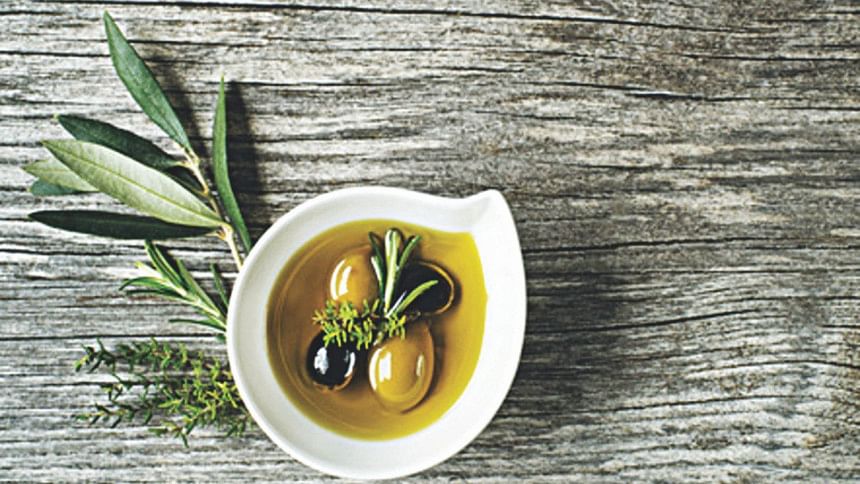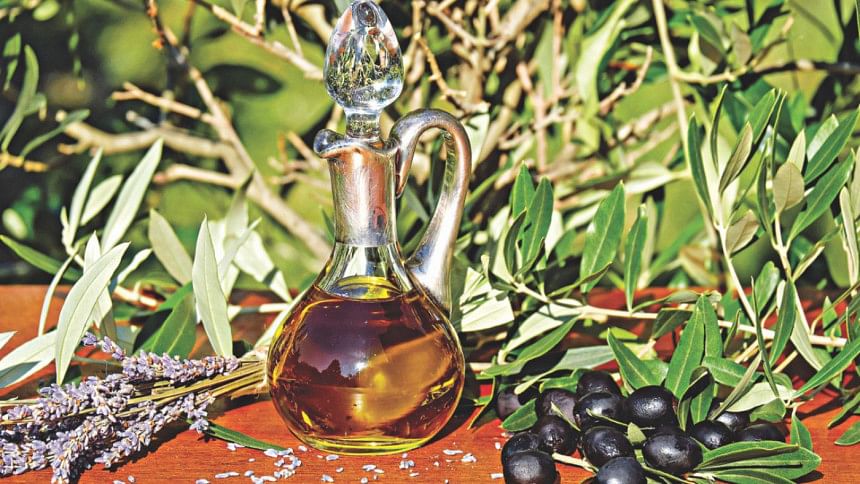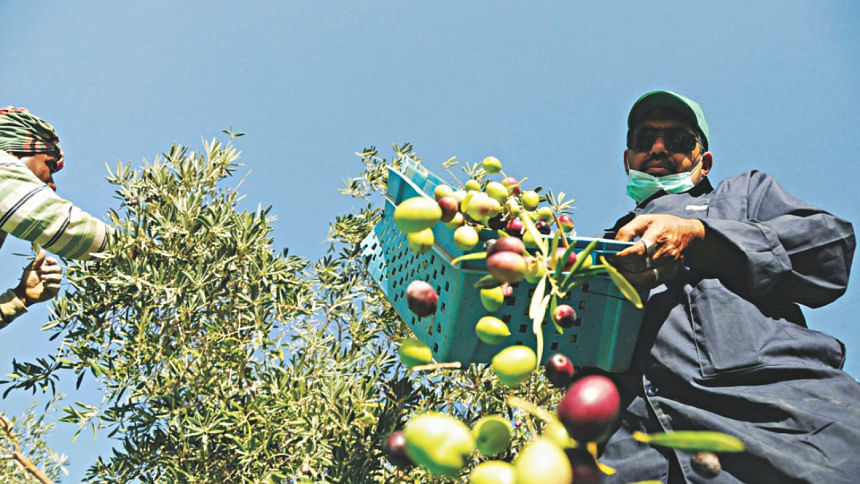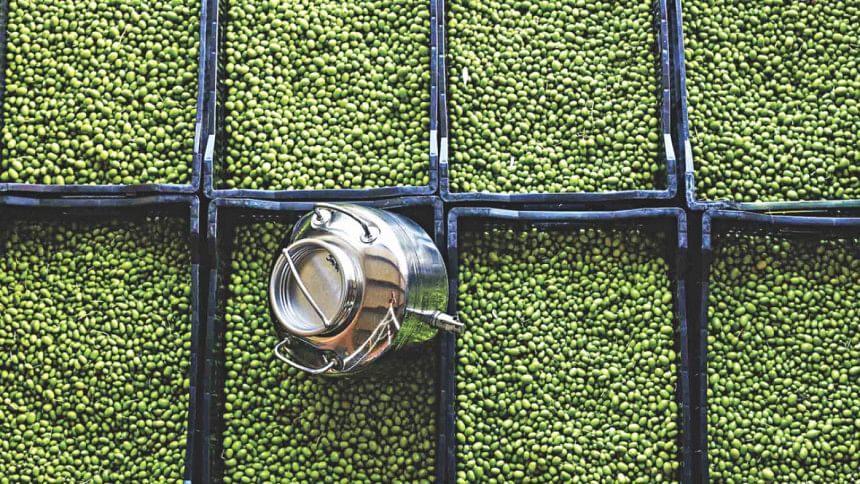The Olive Harvest in Crete, Greece

As winter approaches, the Greeks start preparing for the olive harvest season. With the third highest production worldwide, more than 80% of which is extra virgin olive oil, harvesting this fruit is still very much a family affair for many Greeks.
I live on the island of Crete and the landscape changes rapidly from a sunny beach to a misty, snow capped mountain, scattered with islands that resemble a large, snoozing dragon. The crisscross roads lead to small villages that differ in subtle ways, from possessing their own flour mills, to ancient structures of archaeological significance and an old- world way of living. It all seems spectacularly unreal in contrast to the city, often only half an hour's drive away. This however also gives most Cretans the chance to visit the village often and spend time with family, especially during harvest time. Come November and there is a ripple of excitement as the time to pick olives approaches and people started arranging for a day off or calling family, neighbours and friends, to help out with the communal process of harvesting olives. Most farming procedures are still based on traditional customs and the back-breaking work is made merrier as friends and family work in unity. The extra help one gets is rotated as people volunteer with family and friends so there is always someone available to help out. The end result is then shared with everyone and this was one occasion where I certainly did not shy away from taking away the pure olive oil bottles presented to me!

This past harvest season, I tried lending a helping hand to a friend of mine who was picking the family olives with her father. It is normal for most people to have regular day jobs like working in a bank or an office, while they moonlight as farmers with fields of olives, oranges or rows of vineyards. It is also very common for most Greeks, especially those living in Crete, to consume their own olive oil. So, if you ever happen to visit Greece and marvel at the food, you can be sure it is the olive oil that lends that exquisite flavour!

I stayed the night over at my friend's parents' house which is about less than an hour's drive from the city of Heraklion, east Crete. It was the beginning of December so I stayed glued to a heater that also acted as an oven, where a large home-grown pumpkin was being baked with a dab of olive oil. Just before bedtime, my friend's mother dished out some old, mismatching jacket and trousers my size, as she did not want me to soil my own clothes that were more suited for the city. By the time we woke up it was still too dark and early for me and dressed in my florescent pink jacket and rubber boots, I carried out the most important part of the day's job: the lunch! My friend's father loaded the truck with long spokes that looked like something very painful and a short drive later we arrived at the olive groves. The olive trees were growing in a line and my friend showed me how to lay the green nets under a tree. The nets were at least 10-15 feet in length and a few are laid all around the tree to collect the fallen fruit. Then the poles ending in spokes were connected to a diesel run motor and a godawful sound initiated the start of harvesting the olives.
From pale green, to black and purple hues, the olives are shaken from their branches by the mechanical spokes, which requires considerable fitness to lift the poles and bear the jerking movements. The olives start raining down on to the green nets, along with leaves and the occasional snail! We even had a large hoof fall out from a tree, the aftermath of some scavenging bird's meal. I soon realized that I needed eye protection as the tree also sheds other particulates, so to complete the look, I donned dark shades! One tree down and the nets are dragged onto the next one and once a few trees are done, the olives are scooped up and filled into sacks. I felt my attire would suit the more traditional method of hand picking or as the Greeks would say, I was the randoilostra. In the older days, a particular song meant for olive picking was sung, to keep the momentum going and my friend's father reluctantly sang it for me. We kept gorging on oranges in between picking olives and lunch was a feast of home grown mushrooms and vegetables with bread (the baked pumpkin now made sense!) simply baked with a bit of oil and salt. But set against the background of the olive trees and mountains, even this simple meal tasted absolutely heavenly!

By the end of the day we had done about 15 trees and we drove the sacks off to the local olive oil press. There was a separate line for organic olives and the sacks were upturned into troughs from where they entered a moving shaft that travelled upwards with the olives, their leaves and in case you already forgot… the occasional snail. The olives are separated and washed then enter a churning station and after about one hour, we saw the first spurt of the light green, golden hued oil. The oil is also checked for acidity and this extra virgin olive oil is the result of the first press of freshly picked olives. The trick is to pick olives at the right time to ensure high quality oil, as the greener the olives, the more polyphenols they contain. Often times people cannot finish all the trees in their grove so they leave the sacks at the mill overnight but this does affect the quality of the oil somewhat. This is one of the reasons why it is so important to take the time out and harvest olives in one go, no matter how hard or time consuming it might be. Once the oil was ready, we were carrying oil tins and bottles and after sharing some of the oil with the workers at the mill, we took the remaining. The oil is often enough to the last the family a year and this includes those massive Greek parties where literally everyone is invited.
***
FUN FACTS ABOUT OLIVES
Did you know that Athena won over the people of Athens by offering them an olive tree as a gift?
Each Greek consumes an average of 26 liters of olive oil per year!

 For all latest news, follow The Daily Star's Google News channel.
For all latest news, follow The Daily Star's Google News channel. 



Comments